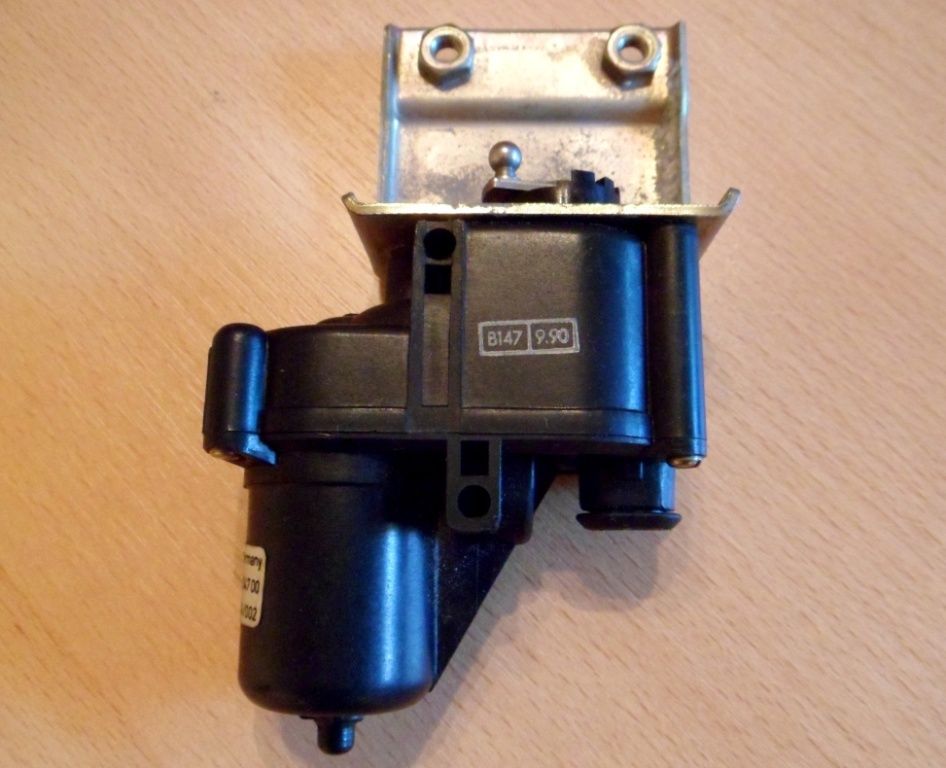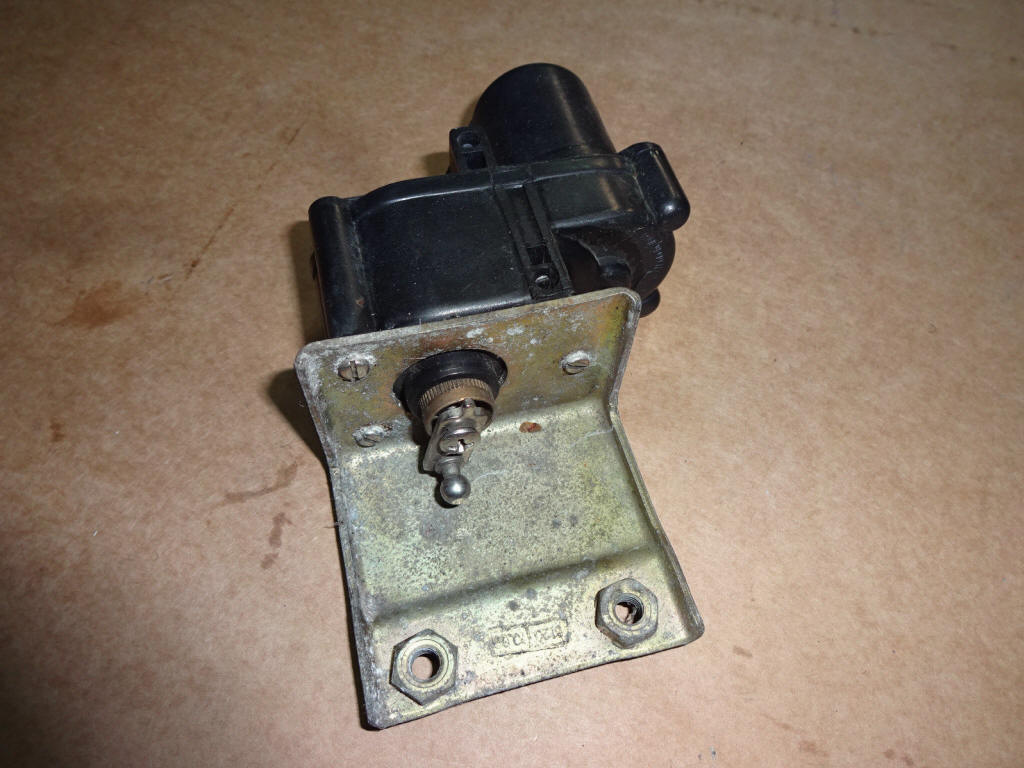
You asked for it:
The nylon actuator on the hatch should be centered. Is the hatch release hitting
the nylon release completely? I used a magic marker to mark the nylon piece. I
then actuated the release to visually check if the striker was hitting the
release. Porsche used a plastic catch on the upper latch thatís designed to
wear. Itís a replaceable, but be sure to get the pin with it. The upper hatch
piece is cast and cracks, flexes and becomes inop. Check the sides of the upper
latch, often the metal of the latch gets a hairline crack on the side and
prevents the motor from releasing the catch. Shim about 1/16"between the rear
side of the male part of the latch and the hatch. This moved the lower end
toward the front of the car, so it works. Use carbon paper to see where itís
contacting. When the catch is moved aft, the latch releases and the spring in
the lower piece lifts the hatch about ľ" above where the catch holds the hatch
down. By moving the motor further down the release cam pushes the catch further
in, allowing the release. A ribbed rubber insert in the lower half of the latch
holds the tongue in position allowing the release. The rubber is soft, shrinks
and wears with age. I inserted a 1"x1ľ" shim between the rubber insert in the
lower piece and the rear of the lower housing. Loosen the motor mount bolts, and
slide the motor up all the way. This relieves stress on the tongue and prevents
cracks. On the lower part of the latch, push the rubber cup at the rear, forward
into the latch area. Slide the shim between the rubber piece and the rear of the
housing. This moves the tongue forward so the catch is moved into the tongue.
Tighten the motor bolts at the top and test. Follow the manual by incrementally
moving the motor down until the hatch starts working. With the hatch closed,
move the motor down until the release cam just touches the catch. If the hatch
fails to release with the motor adjusted to the bottom, start over. The sheet
metal that the upper lock assembly bolts to gets bent so the black post is
pointed toward the rear. Shim to adjust the angle of the upper hatch mechanism
to point it farther back. This helps engage the lower mechanism and pop the
hatch. When the rear hatch lock breaks internally, to open the hatch crawl into
the rear, take the tool kit off, peel up the carpet at the center top section of
the panel behind the tool kit. Drill a ľĒhole in the very center of the panel as
high as possible still on the main body. Then insert a screwdriver to push back
the white plastic latch on the black post. It helps if someone pushes down on
the hatch to release the tension. The carpet covers the hole. The internal cast
metal arm of the lock isnít sold separately. Tried many adjustments without
success, until I read this tip: tape a piece of paper over the receiver; put
some grease on the tip of latch, and gently lower it until it makes a mark on
the paper. Note how far off center, and in which direction, the mark is; then
adjust the latch with shims until it comes down dead center.
Hatch release: The catch edge of the latch wears and prevents the hatch
from closing completely. With the remote release a small metal flap driven by a
motor pushes the catch back. The flap rotates 360į on each activation. This
causes the catch to clear the metal catch on the lower latch and then the spring
in the lower latch pushes the hatch up to clear the lower latch before the motor
releases the upper plastic catch. If there isnít enough clearance due to wear on
the upper plastic catch it wonít release. Also if the latch or hatch is binding
then the spring doesnít have enough strength to push up the hatch. Eventually
between the flap wearing into the plastic catch and the top edge wearing away
the flap cannot push the catch far enough back to release the hatch. There are
several fixes for this, but the best, easiest and most reliable way is to
replace the plastic catch in the top latch. Check that the fasteners are tight
on both the top and bottom part of the latch. There are two adjustments that may
be necessary. Remove the tool panel. Loosen the two 10 mm bolts that hold the
hatch release, and have an assistant trigger the release. Slide the release down
until it begins to drag at the bottom of the cycle, and slide it up until itís
just free. If this doesn't cure the problem, loosen the fasteners holding the
top latch to the hatch, and insert spacers under the outer edge so that the
latch is tilted forward. Make sure that the alignment allows the latch to enter
the receptacle cleanly. A used rear hatch rubber (plastic?) liner solved my
hatch problem where the hatch lid was squirming around and squeaking like crazy.
The liner deteriorates and cracks with age and eventually goes to pieces. With
all the other hatch problems that develop with age, a new unit the makes the
most sense. My symptom was the rear hatch not opening. I removed the lock
cylinder from the assembly. Thereís a small lock screw to remove, and then
rotate the lock cylinder about 20į, then push. Once removed you can withdraw the
white piece. Trying to spread the rivet head in the new pin is a problem. If you
had some sort of press you could do it. I tried the hole-punch and hammer
method; felt as though I would hurt something so stopped. I have left the pin
floating in there. With the grease applied, it has not drifted at all.
Hatch motor won't park is usually the release motor is running so freely
that it coasts over the cutout that should stop it. Possible cures:
1. Clean the cutout. Sometimes, there will be a build-up of copper on the disk that bridges the cutout, allowing just enough power flow to keep the motor running.
2. Pack the gearbox with grease, adding enough drag to slow the motor down so that it won't coast over the cutout.
3. I haven't tried it, but I would think that adding a power resistor in the run-on line before the motor might slow it down enough to solve the problem. Perhaps two ohms, 25 watt from Radio Shack?
4.
Replace the unit!
Jim Mayzurk
93 GTS 5-spd

